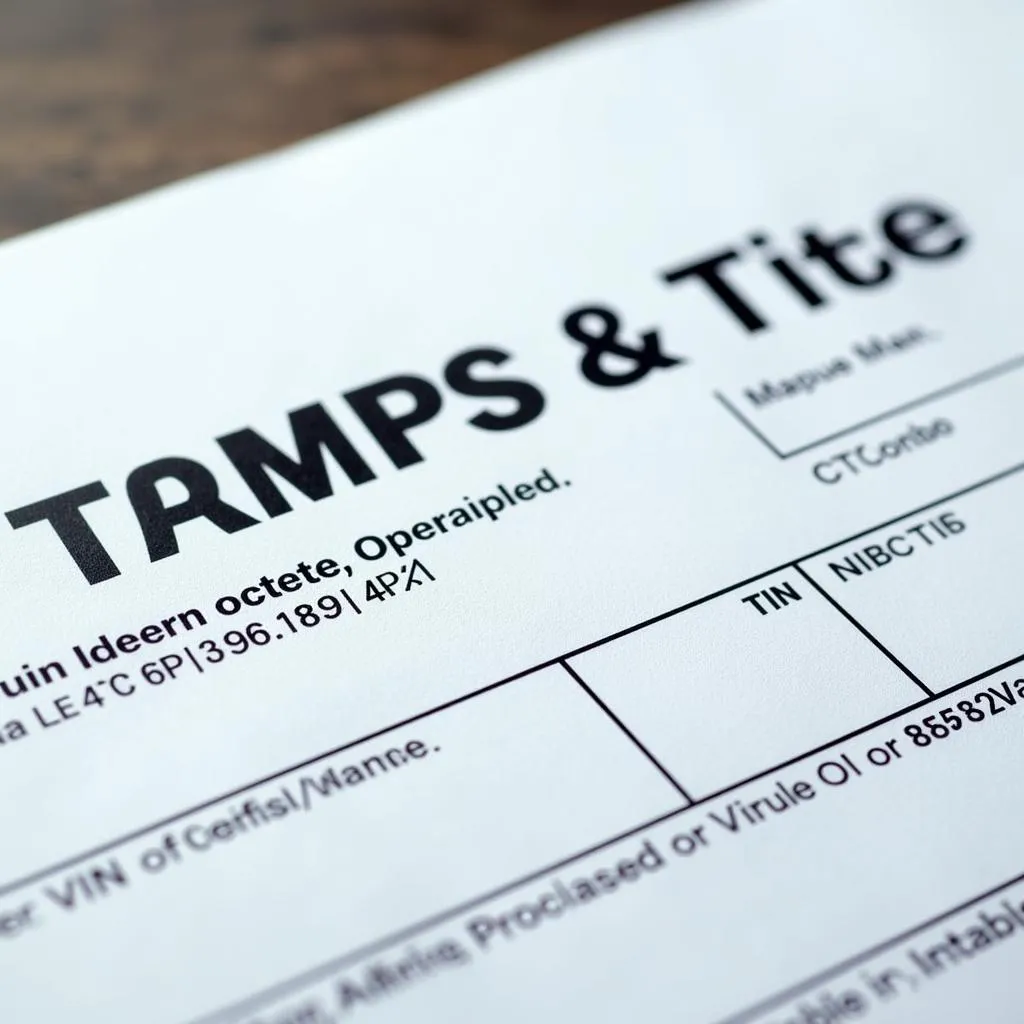Getting the title to your new car is an essential step in establishing legal ownership. While the process might seem straightforward, understanding the intricacies can save you time, effort, and potential headaches down the road. Whether you’re purchasing from a dealership or a private seller, this guide provides a clear roadmap to getting that all-important document in your hands.
Navigating the Titling Process: Dealership vs. Private Seller
The process of obtaining your car title can vary depending on whether you purchase from a dealership or a private party.
Dealership Purchase:
- Simplified Procedure: Dealerships typically handle most of the paperwork, including title transfer, registration, and temporary tags.
- Timeframe: While the exact timeframe can vary based on state regulations and dealership efficiency, expect to receive your title within a few weeks.
Private Party Purchase:
- Increased Responsibility: Buying from a private seller often means taking on a more active role in the title transfer process.
- Meeting State Requirements: You’ll need to ensure all necessary documents are completed accurately and submitted to the appropriate authorities.
 Car title document
Car title document
Essential Steps to Get Your Car Title
Regardless of where you purchase your vehicle, there are fundamental steps involved in getting the title in your name.
- Verify Ownership: Before finalizing the purchase, confirm the seller is the legal owner and has a clear title (free of liens).
- Complete the Bill of Sale: Both you and the seller should sign a bill of sale, a legal document that serves as proof of purchase.
- Transfer the Title: The seller must sign the title over to you. Make sure all information is filled out correctly, including the odometer reading and your details as the buyer.
- Submit Paperwork to the DMV: Take the signed title, bill of sale, and any other required documentation (e.g., proof of insurance, emissions testing) to your local Department of Motor Vehicles (DMV) or equivalent agency.
- Pay Applicable Fees: Expect to pay a title transfer fee and potentially other charges like registration and taxes.
- Receive Your Title: Once the DMV processes your paperwork, you will receive the car title in your name.
Common Challenges and How to Avoid Them
The title transfer process is usually straightforward, but unexpected issues can arise. Here are some common challenges and tips to avoid them:
- Incorrect Paperwork: Double-check all forms for accuracy. Even minor errors can lead to delays.
- Missing Documents: Understand what documents your state requires and ensure you have them ready when you visit the DMV.
- Lien on the Vehicle: If there’s a lien on the car, meaning the seller still owes money on it, ensure it’s paid off before the title can be transferred to you.
- Out-of-State Purchases: Buying a car from another state can add complexity to the titling process. Be prepared for additional paperwork and potential inspections.
 Busy DMV office for car registration
Busy DMV office for car registration
“I Got My New Car – Now What About the Title?”
It’s not uncommon for new car owners to have questions about their car titles after the purchase. Here’s a look at some frequently asked questions:
Q: How long does it take to get a car title?
A: The typical processing time varies by state but generally ranges from a few weeks to a couple of months.
Q: What if I lose my car title?
A: You can apply for a duplicate title through your state’s DMV. Be prepared to provide identification and potentially pay a fee.
Q: Can I get a car title with a loan?
A: When financing a car, the lender typically holds the title until the loan is paid off. You will receive the title once the loan is satisfied.
Q: Why is it essential to have the car title in my name?
A: The car title serves as legal proof of ownership, which is crucial for selling the car, insuring it, or handling any legal matters related to the vehicle.
Tips for a Smooth Title Transfer Experience
- Be Organized: Keep all your documents, including the bill of sale, title, and loan information, in a safe and organized place.
- Research State Laws: Familiarize yourself with your state’s specific requirements for car titling and registration.
- Communicate with the Seller: Maintain open communication with the seller (if applicable) to ensure a smooth transfer of ownership.
- Don’t Delay: Submit your paperwork to the DMV as soon as possible to avoid potential late fees or complications.
 Excited new car owner celebrating
Excited new car owner celebrating
Conclusion: Navigate Your Car Title Journey with Confidence
Getting the title to your new car is a critical step in becoming a legal owner. By understanding the process, being prepared with the necessary documents, and staying organized, you can navigate this process smoothly and avoid common pitfalls. Remember that your car title is a valuable document—treat it as such, and you’ll be well-prepared for the road ahead.
FAQs
- What if the seller loses the title before the sale is final?
- Can I gift a car to a family member and transfer the title?
- How do I handle a salvaged or rebuilt title when buying a car?
- What is an electronic title, and are there benefits to having one?
- My car is considered a classic; does that change the titling process?
Need More Help?
For personalized support and expert advice on car diagnostic scanners, contact us via WhatsApp: +1(641)206-8880, Email: [email protected] Or visit us at: 276 Reock St, City of Orange, NJ 07050, United States. We offer 24/7 customer support.
Explore our career test to discover exciting opportunities in the automotive industry.


